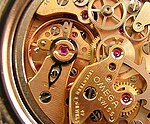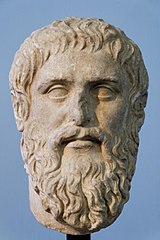Animals and birds are dying because of the wickedness of our people, people who say, "God doesn't see what we are doing."
Jeremiah 12:4 (Today's English Version)
In 1967, historian Lynn White published a now famous piece entitled "The Historical Roots of Our Ecological Crisis."
 White, himself a Christian, concluded that many of our environmental problems could be traced to the Christian notion that God gave this earth to humans for their use and specifically directed humans to exercise dominion over the earth and all of its life forms. While it is questionable that this is what White intended, the effect of the piece has been to serve as an indictment of Christianity as the source of our environmental problems, and to render laughable the idea that Christianity might have anything to contribute to our environmental crisis. As essayist Wendell Berry has observed, "the culpability of Christianity in the destruction of the natural world and uselessness of Christianity in any effort to correct that destruction are now established cliches of the conservation movement."
White, himself a Christian, concluded that many of our environmental problems could be traced to the Christian notion that God gave this earth to humans for their use and specifically directed humans to exercise dominion over the earth and all of its life forms. While it is questionable that this is what White intended, the effect of the piece has been to serve as an indictment of Christianity as the source of our environmental problems, and to render laughable the idea that Christianity might have anything to contribute to our environmental crisis. As essayist Wendell Berry has observed, "the culpability of Christianity in the destruction of the natural world and uselessness of Christianity in any effort to correct that destruction are now established cliches of the conservation movement."
Largely as a reaction and response to White’s piece, Christian thinkers have over the last three decades formulated a response to White’s indictment. The response has taken three distinct paths. One path, which can be called the Stewardship Model, concludes that God did indeed give humans dominion, but only on the condition that we act as wise stewards, exercising our dominion with prudence and care. This is the model that is preferred within evangelical and fundamentalist circles, to the extent that this wing of Christianity chooses to address the environmental issue.



 Religion and Ecology
Religion and Ecology




 Architect Christopher Alexander may have just succeeded in doing what philosophers back to Thomas Aquinas and Aristotle have eternally sought to do: find God through science. In his four-volume work titled The Nature of Order, Alexander uses the vocabulary of architecture and the empirical tools of a scientist to discover the principles of what he calls “life.” Following his 30-year study of life and the universal human response to it, Alexander illustrates his idea that matter must hold within it something life-like — something God-like — which all humans understand as a pleasing beauty and order.
Architect Christopher Alexander may have just succeeded in doing what philosophers back to Thomas Aquinas and Aristotle have eternally sought to do: find God through science. In his four-volume work titled The Nature of Order, Alexander uses the vocabulary of architecture and the empirical tools of a scientist to discover the principles of what he calls “life.” Following his 30-year study of life and the universal human response to it, Alexander illustrates his idea that matter must hold within it something life-like — something God-like — which all humans understand as a pleasing beauty and order. 

